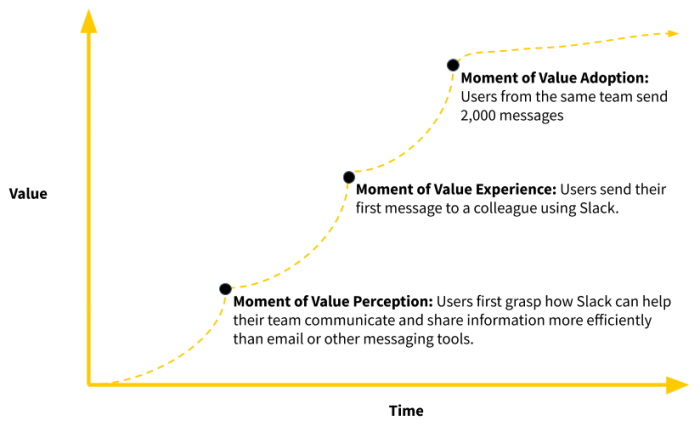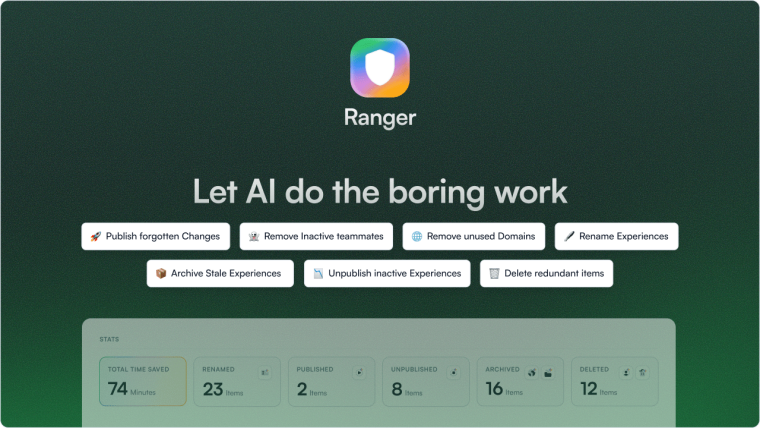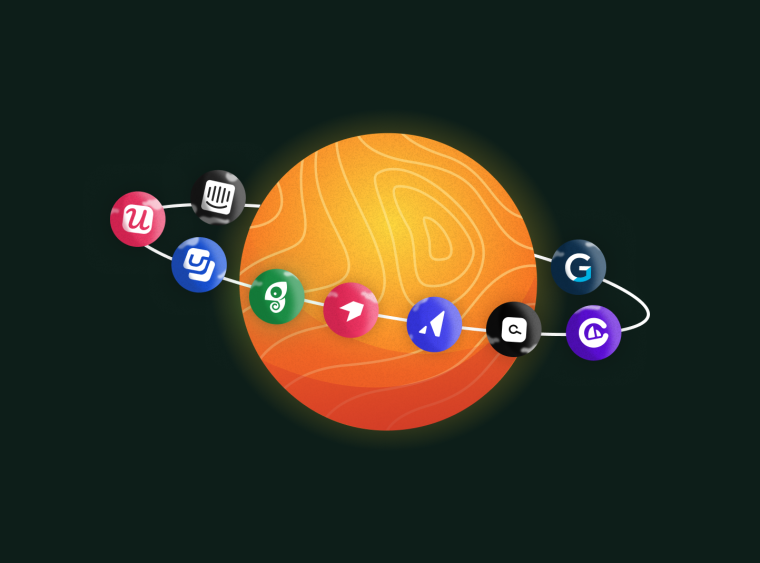First impressions matter. If new users don’t see within a few seconds how your product benefits them, they’ll likely bail before discovering your product’s true potential. This is where activation rate comes in—it’s your early alert system for user engagement. A solid activation rate means people are finding value fast, which paves the way for long-term adoption and loyalty.
In this guide, we define activation rate, explore why it matters, and walk you through six proven tactics to boost SaaS activation rates—so your users stick around long enough to see just how great your product really is. Let’s dive in!
Your activation metrics reflect how well you show users the value of your product. Improve product activation, boost user activation, and achieve better retention rates by:
Setting clear milestones
Personalizing onboarding
Sending targeted milestone messages
Offering proactive support
Using analytics
Continuously optimizing your process
What is the activation rate in SaaS?
Activation rate in SaaS is the percentage of new users who complete a critical action or milestone—known as an activation event—that indicates they’ve experienced the product’s value.
The activation metric measures how many of your new users reach a defined user activation event within a certain timeframe. This event and your target timeframe can vary by product, but it often involves reaching a specific point that proves your tool’s value—such as completing a key onboarding step, engaging with a core feature, or hitting a usage milestone that indicates successful product adoption.
Why does activation rate matter?
A strong activation rate signals that you’re helping users discover value early. This leads to:
Higher retention: Activated users are more likely to stick around, reducing churn
Increased product adoption: When users see immediate value, they’re more inclined to explore other features
Better revenue growth: Activated users often convert to paying customers, boosting your bottom line
Activation rate vs. time-to-value: What's the difference?
Time-to-value (TTV) measures how long it takes users to achieve the first meaningful outcome in your product. Activation rate focuses on the percentage of users who reach that meaningful outcome. Both metrics for success are linked—shorter TTV usually improves activation rates.
For example, if TTV is short, it means users are delighted faster. This raises user activation rates, because it means more people become engaged before dropping off. If TTV is long, a low activation rate can highlight where you need to speed up the onboarding process.

What qualifies as an ‘activation event’?
An activation event is a specific action that clearly shows a user is gaining value from your product. This activation point might be:
Completing a guided onboarding tour
Using a key feature that solves a pain point
Uploading data, inviting a teammate, or integrating a tool
Think of it as a signal that a user has experienced their first “aha” moment. If time-to-value measures how long it takes to deliver that moment, then the activation event is the milestone confirming you’ve succeeded.
💡 Pro tip: For more guidance, check out how to improve onboarding activation or optimize SaaS user onboarding.
How to measure your activation success?
STo measure activation, define clear criteria for what ‘activated’ means for your product, then track the percentage of new users who achieve that outcome. You can use product analytics tools, cohort analysis, and user journey maps to help calculate activation rate and monitor trends over time.

What is a good activation rate for SaaS?
As of Userpilot’s 2024 benchmark report, user activation rates vary depending on product complexity and stage. Many SaaS products see an average activation rate of around 20–40%, while top performers break through the 50% mark, showcasing a clearer path to value and stronger initial engagement.
What’s important is establishing your baseline and continually improving it. Set incremental goals that align with your product’s complexity, audience, and product KPIs, and focus on consistent improvement over time.
6 Tactics to increase user activation in SaaS companies
Improving SaaS activation rate requires a combination of smart onboarding, proactive support, and data-driven optimization. Here are six tactics for boosting activation rates:
1. Set clear activation milestones for different user segments
Not all new users are created equal—and neither are their journeys. Define user activation by establishing specific activation milestones that scream “success!” for each user segment on their specific journey.
For example, enterprise customers might need to invite team members to your SaaS product, while free trial users may need to engage with a key feature to experience its benefits. By tailoring user success milestones to different segments, you can track activation rate, better understand user behavior, and ensure that more users quickly become activated users who see real value in your product or service.
🎬 Webinar Recording: 6 Ways to Collect and Apply User Feedback to Improve Your Product
2. Personalize onboarding to match user needs
A one-size-fits-all onboarding flow can slow activation and feature adoption, and reduce user engagement. Instead, use in-app guidance, interactive tutorials, and tooltips to highlight key features based on each user’s role, previous actions, or user journey stage.
This personalized approach shortens your customer base’s time-to-value, improves your product's activation rate, and helps you convert visitors into loyal, engaged customers who benefit fully from your product.

(Source: RemoteBase)
3. Create milestone messages to motivate users
As users complete (or miss) important steps or approach activation events, send timely prompts or celebratory messages. For example, when users complete an important step, celebrate it: “You did it! One step closer to mastering [your product’s key feature].” If they’re stalling, give them a gentle push: “Hey, don’t forget this next step—it’s where the magic happens!”
These communication strategies guide potential customers through their user onboarding experience, reinforce progress, and encourage them to move forward.
By proactively reaching out, you maintain customer satisfaction, increase your conversion rate, and help ensure a higher percentage of users achieve a good user activation rate that drives retention and long-term success.

(Source: GoSquared)
4. Offer proactive customer support during activation
YDon’t wait for users to struggle. Provide proactive assistance—such as a live chat widget, sign-up forms with guidance, or an onboarding checklist—to guide them through initial, common friction points.
When you resolve issues early in the customer journey, you build trust and show users they’re in good hands. The payoff? Happier customers who find value faster, stick around longer, and boost your activation metrics (and your bottom line).
5. Validate assumptions with product analytics
Use analytics tools to monitor activation metrics—like time-to-value, completion of key onboarding steps, feature adoption rate, and conversion from free trial users to paying customers—to understand user behavior and identify where new users get stuck.
For example, if one automated product adoption flow consistently drives activation, double down on it. And if users stall at a certain step, simplify it.
By focusing on relevant data and key metrics, you gain valuable insights into what drives successful activation so you can refine your activation rates over time and turn free trial users into paying customers.

6. Continuously analyze and optimize activation strategies
Activation isn’t a one-and-done deal—it’s a process that thrives on constant fine-tuning. Successful high-activation businesses regularly revisit their activation rate insights, test new ideas (hello, A/B tests!), and refine their onboarding flows to drive revenue growth.
Want better results? Track your activation rate over time. Identify which actions increase the total number of users who reach activation milestones or engage with premium features. And don’t stop there—use user feedback, retention rates, and conversion metrics to measure what’s working and what needs fixing.
As you refine your strategies, you’ll create an activation process that scales with your growth and keeps users returning for more.
Activate more users quicker than ever before
AImproving product activation is an ongoing process—there’s no one solution that works for every SaaS product. By defining meaningful activation events, measuring your SaaS customer activation rate, and using data-driven tactics, you’ll help more users see the value in your product right from the start.
Set clear milestones, personalize the onboarding journey, provide proactive support, and continually refine your approach to see more engaged users, higher retention rates, and better overall growth.
Ready to improve activation rates and boost retention? Try Chameleon or book a demo to guide your users toward value and success from day one.







